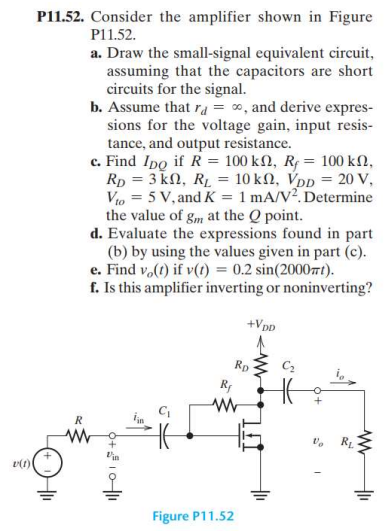P11.52. Consider the amplifier shown in Figure P11.52. a. Draw the small-signal equivalent circuit, assuming that the capacitors are short circuits for the signal. b. Assume that rd = ∞, and derive expressions for the voltage gain, input resistance, and output resistance. c. Find IDQ if R = 100 kΩ, Rf = 100 kΩ, RD = 3 kΩ, RL = 10 kΩ, VDD = 20 V, Vto = 5 V, and K = 1 mA/V2. Determine the value of gm at the Q point. d. Evaluate the expressions found in part (b) by using the values given in part (c). e. Find vo(t) if v(t) = 0.2 sin(2000πt). f. Is this amplifier inverting or noninverting? Figure P11.52
